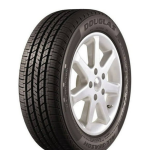If you have an old or damaged car that’s no longer functional, you might be considering the option to sell your car for parts. Selling a car for parts is not only a practical way to dispose of a vehicle that’s seen better days, but it can also provide you with extra cash. Many components of a vehicle, even if the car itself is no longer drivable, can still have significant value. From engines and transmissions to smaller parts like mirrors and headlights, the market is always on the lookout for usable components. In this comprehensive guide, we will cover everything you need to know about selling your car for parts—from understanding the process and preparing your vehicle to tips for effective sales strategies. By the end of this article, you can navigate the complexities of selling a car for parts with confidence and maximize your financial return.
Understanding the Value of Car Parts
Before diving into the specifics of selling your car for parts, it’s essential to understand the value that various components can hold in the market.
Factors That Influence Parts Value
Several factors can affect the resale value of car parts:
- Condition of Parts: Parts that are in good working order and show minimal signs of wear will fetch higher prices compared to those that are damaged or heavily worn.
- Rarity and Demand: Some vehicles have parts that are highly sought after due to their rarity or high demand among mechanics and hobbyists.
- Current Market Trends: Monitoring trends in the automotive aftermarket can help you understand which parts are currently popular and commanding higher prices.
Commonly Sought-After Parts
When you decide to sell car for parts, knowing which components are most valuable can guide your efforts.
- Engines: A functioning engine can be one of the most valuable parts of a vehicle, especially if it’s a popular model.
- Transmissions: Similar to engines, working transmissions can attract buyers due to their high replacement costs.
- Body Panels: For older or classic cars, body panels in good condition are often sought by restorers.
- Interior Components: Seats, dashboards, and electronics can also hold significant value.
- Electronics and Sensors: Many modern cars contain sophisticated electronics and sensors that can be highly desirable.
Preparing Your Car for Sale
Proper preparation is crucial when you’re looking to sell car for parts. Taking the time to get your vehicle ready will streamline the process and potentially increase your profits.
Assessing Condition
Start with a thorough assessment of your vehicle.
- Inspect All Parts: Take an inventory of every significant part on the vehicle, noting their condition. Identify components that are still functional and those that may need replacement.
- Take Pictures: Document the vehicle and individual parts with clear photographs. High-quality images will help you showcase the condition to potential buyers.
Cleaning the Vehicle
While it may seem unnecessary to clean a car that you plan to dismantle, a clean vehicle can enhance its appeal.
- Remove Debris: Clear out any trash from the inside and outside of the car. This initial cleaning can help buyers see the potential value in your parts.
- Wipe Down Surfaces: Use a damp cloth to wipe down surfaces and clear away dust from visible parts. Clean images can help attract buyers.
Gathering Documentation
Having the right paperwork can facilitate the selling process.
- Title and Ownership Proof: Make sure you have the title of the car ready. Buyers want assurance that you are the rightful owner.
- Service History: If available, provide service records or maintenance history. This can contribute to the perceived value of functional parts.
Evaluating the Best Sales Channels
When it comes to selling car for parts, there are various channels available, each with its pros and cons.
Selling to a Junkyard
Taking your vehicle to a junkyard is one of the most common methods for selling car for parts.
- Pros: Junkyards often pick up vehicles and can give you payment on the spot. This option is convenient and often requires less effort on your part.
- Cons: You may not receive as much money as you would if you sold the parts individually, and you may have limited bargaining power.
Selling Online
Online marketplaces provide a broad audience for sell your car for parts.
- Websites and Apps: Platforms like eBay, Facebook Marketplace, or dedicated automotive parts sites (such as Car-Part.com) allow you to list parts individually.
- Pros: There is potential for higher profits when selling each part separately to interested buyers.
- Cons: You may face more competition, and it can take longer to sell the parts individually.
Local Classifieds
Using local classified ads (both online and in print) can attract buyers in your area.
- Pros: You can connect with local buyers, making the exchange process simpler and avoiding shipping costs.
- Cons: Limited audience reach compared to selling online. It may take longer to find interested buyers.

Word of Mouth and Networking
Tap into your personal network to find buyers.
- Friends and Family: Leverage your social circle by letting them know you’re selling parts. They might know someone interested in purchasing.
- Car Clubs and Forums: Seek out car enthusiasts in clubs or online forums. Members may be specifically looking for parts for restoration or repair projects.
Safety and Legal Considerations
Selling car for parts involves several legal and safety aspects you should be aware of to protect yourself throughout the process.
Check Local Laws
Before selling car parts, familiarize yourself with local laws surrounding the sale of used auto parts.
- Licensing Requirements: Some areas may require you to register as a business or obtain a special license if you plan to sell parts regularly.
- Regulations on Hazardous Materials: If your vehicle contains hazardous materials (such as coolant or oil), be aware of regulations involving proper disposal.
Liability Concerns
Consider the liability that may arise when selling used car parts.
- Disclosures: Be transparent about the condition of the parts you are selling. Any misrepresentation can lead to disputes or legal action.
- Safety Measures: If you arrange for buyers to visit your home or meet in public, prioritize safety. Choose well-lit, populated areas, and consider bringing someone along.
Additional Tips for Selling Car Parts
Once you’re ready to sell, implementing these tips can make a significant difference in your success.
Be Honest About Condition
When advertising sell your car for parts, honesty about their condition fosters trust and can lead to repeat business.
- Detailed Descriptions: Clearly outline the condition of each part in your listings. If there are issues, state them upfront to avoid disputes later.
Negotiate Wisely
Be prepared to negotiate with potential buyers.
- Set a Fair Price: Do research to understand the typical value of the parts you’re selling, factoring in condition and market demand.
- Be Open to Offers: Consider all reasonable offers, as the goal is to sell the parts efficiently while maximizing your return.
Provide Excellent Customer Service
Making a positive impression can enhance your reputation and lead to future sales.
- Prompt Communication: Respond to inquiries quickly and be clear in your communication. Good customer service can lead to better negotiations and sales.
Use Clear Photos
High-quality images increase the likelihood of selling.
- Showcase Parts Well: Take multiple photos from different angles and highlight any defects or notable features. Clear images make your listing more appealing.

Conclusion
Selling a car for parts can be a rewarding venture, both financially and in terms of decluttering your space. By taking the time to understand the true value of your vehicle’s components, preparing adequately, and choosing the right sales channels, you can maximize your profits and ensure a smooth selling process. Whether you decide to sell to a junkyard or showcase each individual part online, the strategies discussed in this detailed guide will help you navigate the complexities of the process.
Moreover, being aware of important safety and legal considerations and employing effective sales techniques will not only improve your experience but can also enhance your reputation as a seller. By following these tips and strategies, you’ll be well-prepared to embark on the journey of selling your car for parts, ensuring you make the most out of what may seem like an obsolete vehicle.

